Standards and recommendations for installation
Since a stationary sewer system is rare in summer cottages, the problem with waste is solved with the help of a cesspool. It is the presence of it or a septic tank that determines all the restrictions and requirements for the placement of the toilet house.
So, the installation of a country toilet assumes its removal from:
- a residential building by 10-12 meters;
- a children’s playground or a garage with a cellar by the same 10 + meters;
- a bathhouse or summer shower by 8 m;
- a stationary source of drinking water by 25 meters or more;
- a well being collected by 8 m;
- a common fence with neighbors by at least 1 meter;
- a fence facing the street by 3-5 m.
Important! The requirements of SNiP 30-02-97 are not recommendations, but rules that must be followed. Violators face a fine of up to 5,000 rubles and forced relocation of the country toilet.
The above requirements help prevent many problems that can be created by an improperly located toilet with a cesspool. Among the possible problems:
- unpleasant odors on your or your neighbor’s country plot, which not only disrupt comfort, but also harm health;
- harmful bacteria that infect the soil and crops growing in it;
- spoilage of drinking water (if the cesspool is located too close to the well).
Important! If sewage from the country toilet goes into a cesspool, place the latter so that a sewage truck can drive up to it.
To build a comfortable country toilet, you need to remember not only the distances from the nearest buildings, but also the dimensions of the toilet house itself. The size of the cabin is no longer regulated by special documents, they depend only on personal preferences.
On the one hand, it may seem that the more spacious, the better. On the other hand, a larger structure will require more expenses: this applies not only to finances, but also to effort, as well as the area on the site.
Therefore, when building a toilet in the country with your own hands, it is recommended to adhere to the principle of sufficient comfort: that is, to make the structure no larger than is actually necessary. To make it easier to determine the dimensions of the toilet at the dacha, here are some useful figures:
- the dimensions of purchased bio-toilets are ~110-120 cm on each side;
- the dimensions of a finished bio-toilet are approximately 40*40 cm;
- there should be about 30 cm on each side of the toilet or hole;
- it is advisable to leave at least 55-60 cm to the door in front of the seat.
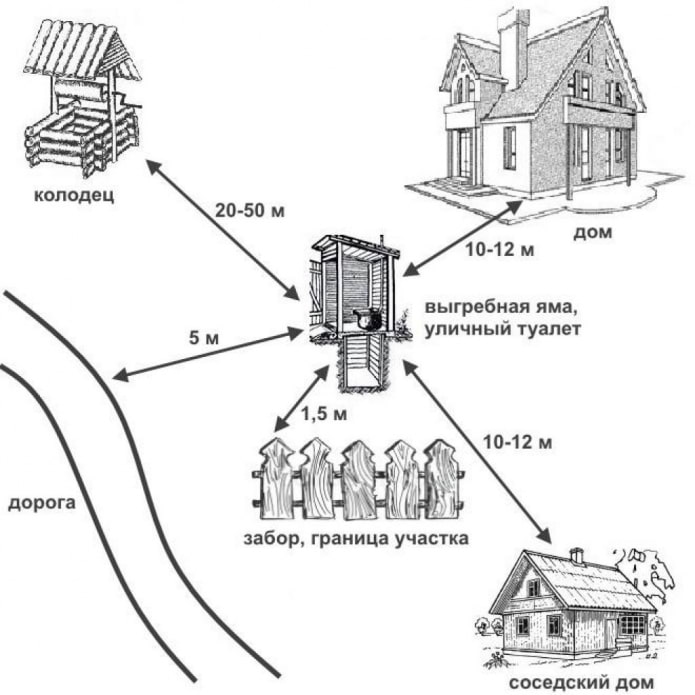
Which type of toilet should you choose?
There are 3 main types of dacha toilets based on their design.
Cesspool
A standard version of a country closet with a pit underneath. The main disadvantage of this solution is the difficulty in choosing a location, because all SNiP rules apply primarily to toilets with a cesspool, since a not completely sealed structure leads to contamination of groundwater, soil and all the problems that follow.
Another disadvantage is the smell from the cesspool. To get rid of it, you will have to regularly clean the insides (using bacteria or a sewage truck), and also take care of the cabin itself: for example, paint it, removing ingrained fumes.
But the large capacity of the cesspool allows the whole family to use such a structure without worrying about waste recycling.
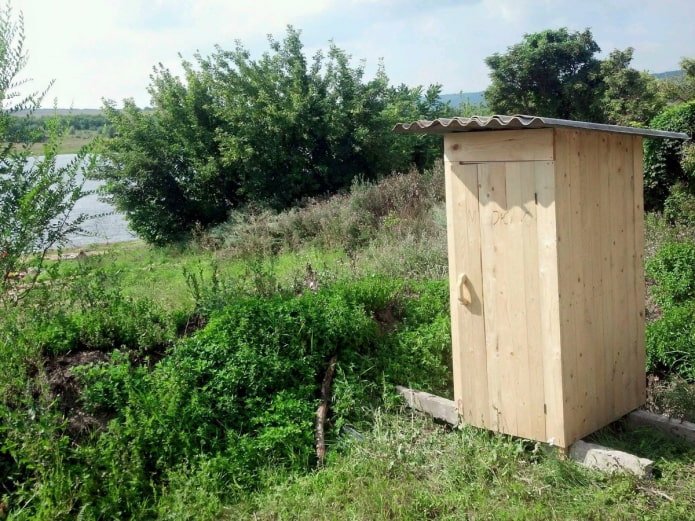
Powder closet
The main difference from the cesspool country toilet is the immediate absence of a septic tank. Accordingly, this option is more environmentally friendly compared to the first: waste does not get into groundwater, and when choosing a site for placement, you only have to consider the possibility of an unpleasant odor.
The design of such an outdoor toilet is quite simple: a booth, a toilet seat with a lid on a platform, a container for collecting waste directly under the seat. And most importantly, a tank with powder: here it is instead of water. Sawdust, special salts or peat are most often used as powder.
In the conditions of a summer cottage, a peat toilet is more practical: not only is the unpleasant odor absorbed, but also rapid rotting processes occur. After filling the container, the contents are transferred to a heap with compost and used as fertilizer.
Powder closets are often equipped with a primitive ventilation system. The ventilation pipe is attached directly to the container and is led outside. Due to this, the remaining unpleasant odors do not spread throughout the cabin, but dissipate outside.

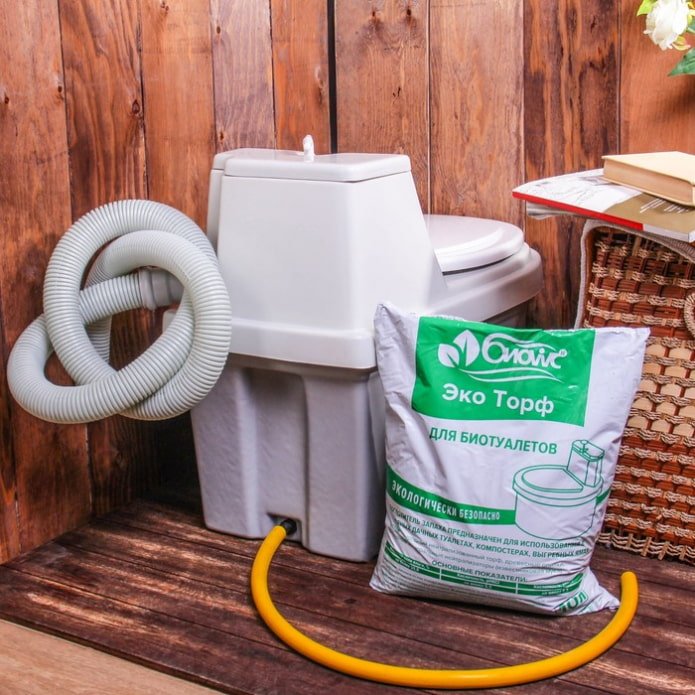
Biotoilet
Plastic cabins of blue, gray or green color, known in the CIS as biotoilets, have another name throughout the world – chemical. And the last one characterizes the principle of operation of the design in the best possible way.
Chemical country toilets are a “closed” toilet consisting of 2 tanks: the upper one with a seat and the lower one – a sanitary tank with a special liquid. Water with special additives effectively eliminates odors, in 20-30 hours it decomposes feces into a homogeneous mass without odor. The plastic frame also does not absorb odors, and it is also easy to wash (you can even clean the inside with a hose or a car wash).
The absence of a cesspool and strong odors allows you to install a toilet in the country absolutely anywhere – including directly next to a residential building.
Unfortunately, chemical technology also has disadvantages: formaldehyde or other chemicals responsible for the decomposition of sewage negate all the convenience of the cabin. The thing is that waste needs to be regularly poured out somewhere, but you can’t do this in the ground or in a summer cottage compost heap: the chemicals will poison everything around. Therefore, you will still have to get a septic tank or a sealed cesspool, and also regularly call the sewage disposal service.
Another disadvantage of plastic itself is that the walls fade in the summer sun and crack from the winter frost. After a short time, the toilet in the country will lose its attractive appearance.
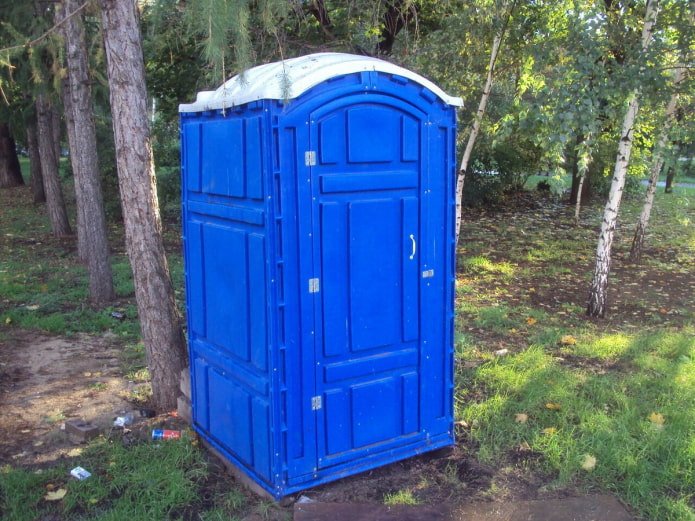
What material should you choose for construction?
Building a toilet with your own hands begins with choosing a building material:
Wood. The most popular building material: easy to process, inexpensive and accessible. Wooden toilets are built from timber and boards: they are quite light, do not require a serious foundation – you can get by with small posts. Of the minuses – wood is short-lived, but with proper processing even it will last at least 10-15 years.
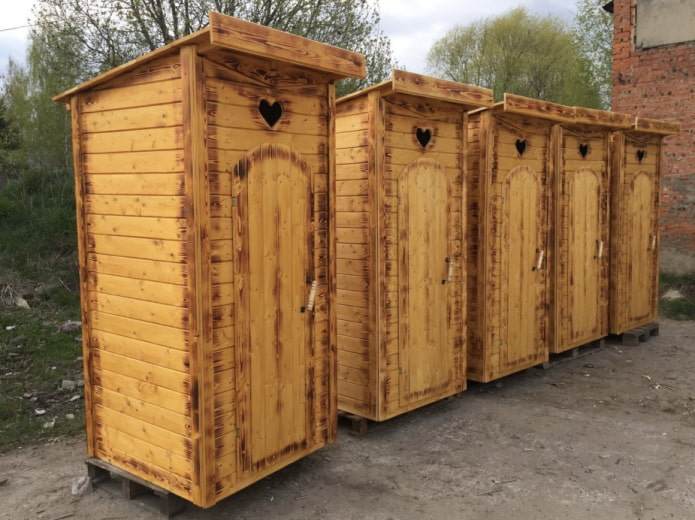
The photo shows finished cabins made of burnt wood
Metal. This material for the toilet is more practical than wood: galvanized corrugated sheet, for example, does not require processing before installation. But at the same time, it is lightweight, the frame structure can be assembled in just a day.
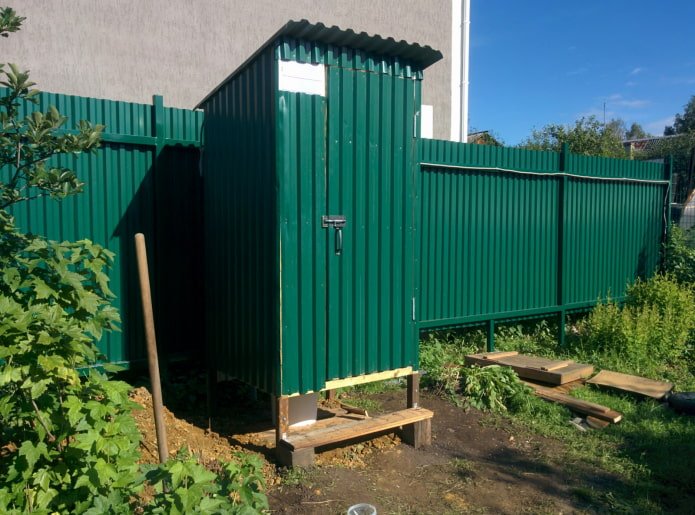
Brick. Buildings made of red brick are beautiful and reliable. Although the latter depends on the level of skill. If you lay the masonry in compliance with all the rules, the toilet will last for decades.
Foam block/aerated block. Concrete blocks are larger than brick, so you can erect a small building from them in a matter of days. Reliable, warm, inexpensive, but have one drawback: aesthetics. Therefore, a finished house requires arrangement from the inside and outside. For this, they use clapboard, siding, plastic panels.
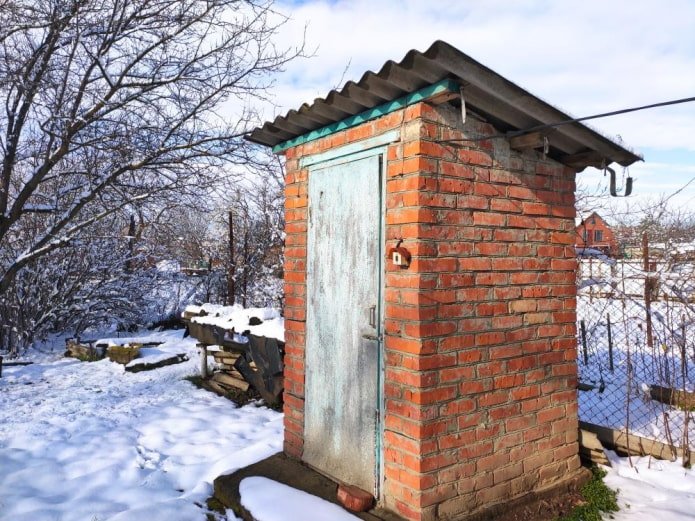
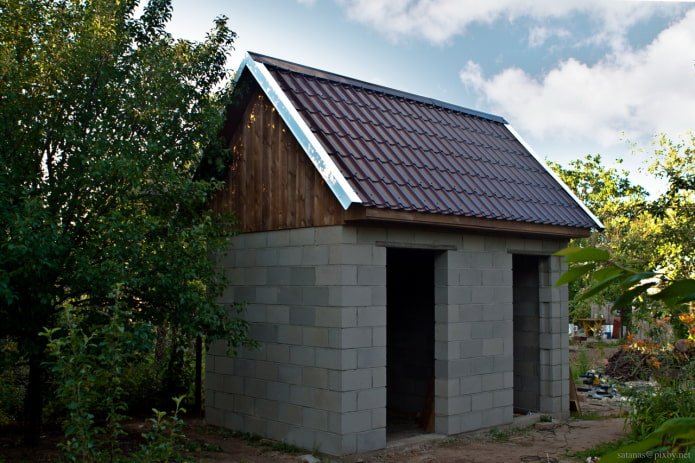
How to do it yourself?
There are many ways to build a toilet in the country. We have chosen the most popular ones: a house made of concrete blocks with a cesspool, as well as a wooden closet with a dug-in barrel, instead of a complex homemade pit.
Step-by-step instructions
Building a toilet in the country with your own hands begins with a drawing: a competent scheme will save you from problems with a shortage or overspending of material, and will allow you to calculate everything you need in advance.
Next, we will prepare the necessary consumables and tools:
- cement, sand, concrete mixer;
- reinforcement or mesh;
- plywood;
- concrete blocks;
- timber, boards;
- slate, ondulin or tiles;
- self-tapping screws for wood, slate;
- 50 mm pipe;
- plane, jigsaw, chainsaw, angle grinder;
- screwdriver, hammer;
- level;
- trowel;
- shovel;
- tape measure, pencil.
Let’s get to work:
- Dig a hole. The drawing will help determine the dimensions. Average dimensions are 1.5-1.7 in width, ~2 meters in depth.
- Assemble the plywood formwork, immediately laying the logs for the future floor. Insert the reinforcement, fill the walls and the bottom with concrete mortar and let it dry. This step can be skipped if the soil on your site is already dense and is not subject to erosion by wind or precipitation.
- After the concrete has 100% hardened, dismantle the formwork, lay out the first row of concrete blocks along the perimeter of the foundation, leaving an opening for the door. Build the walls to about half the height of the structure.
- Assemble the frame of the future door from boards, install the rafters, using the frame as racks and making an additional rack at the back, attach the sheathing. Cover the roof with ondulin or any other roofing material (depending on what is at hand).
- Lay the floors, build a seat from boards. To make it warm and comfortable to sit, you can attach a toilet seat over the opening in any convenient way.
- Measure the size of the frame, assemble a suitable door from plywood. We install it on hinges.
- We drill a hole for the ventilation pipe next to the seat and in the roof. We insert and seal.
- Done!
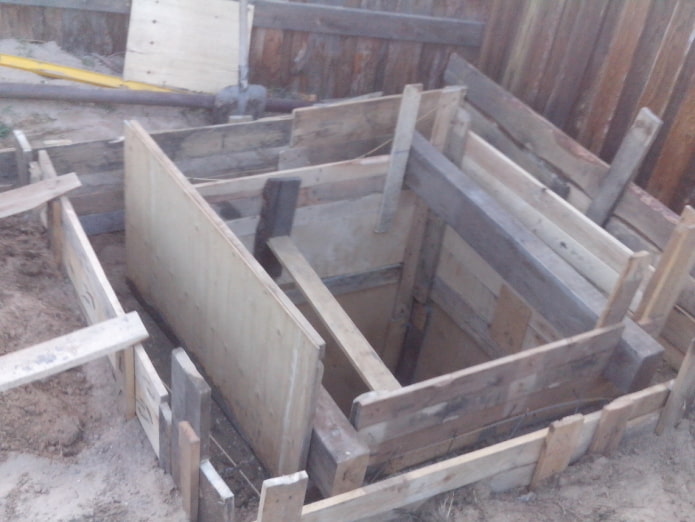
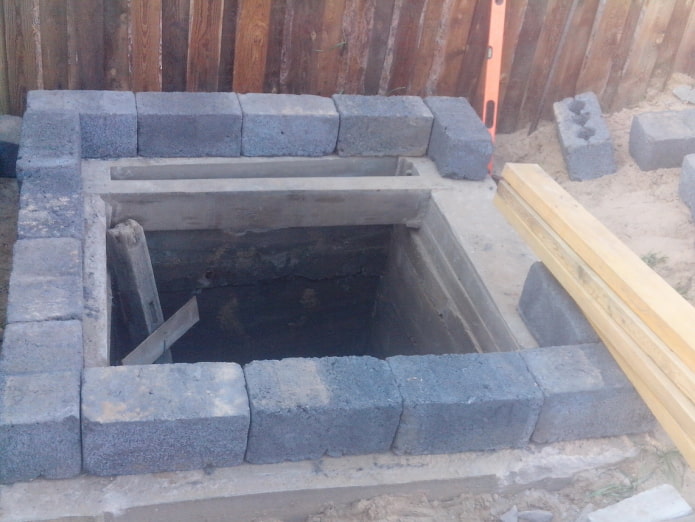
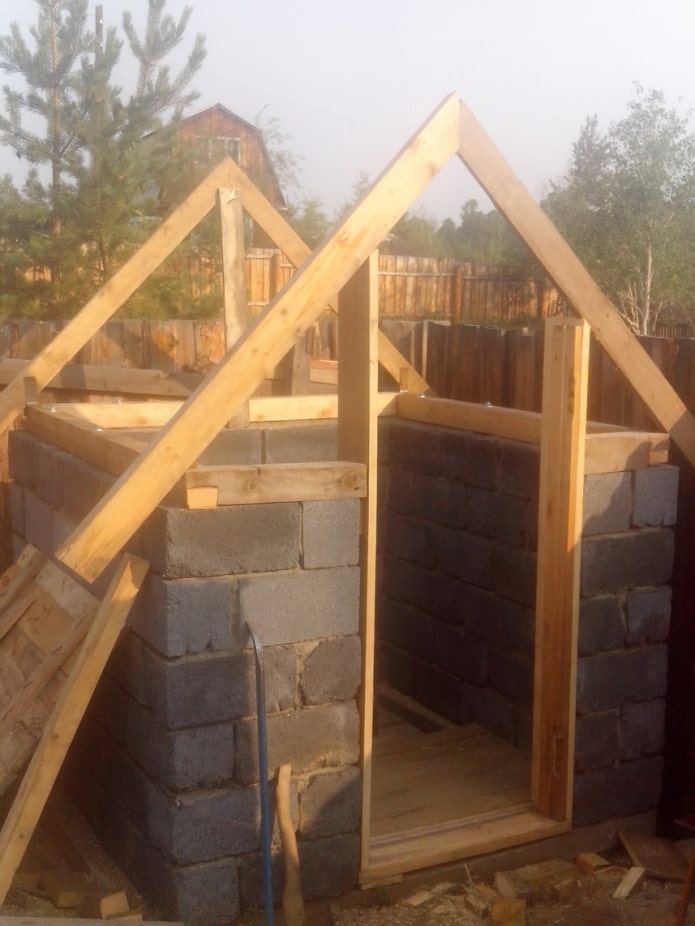
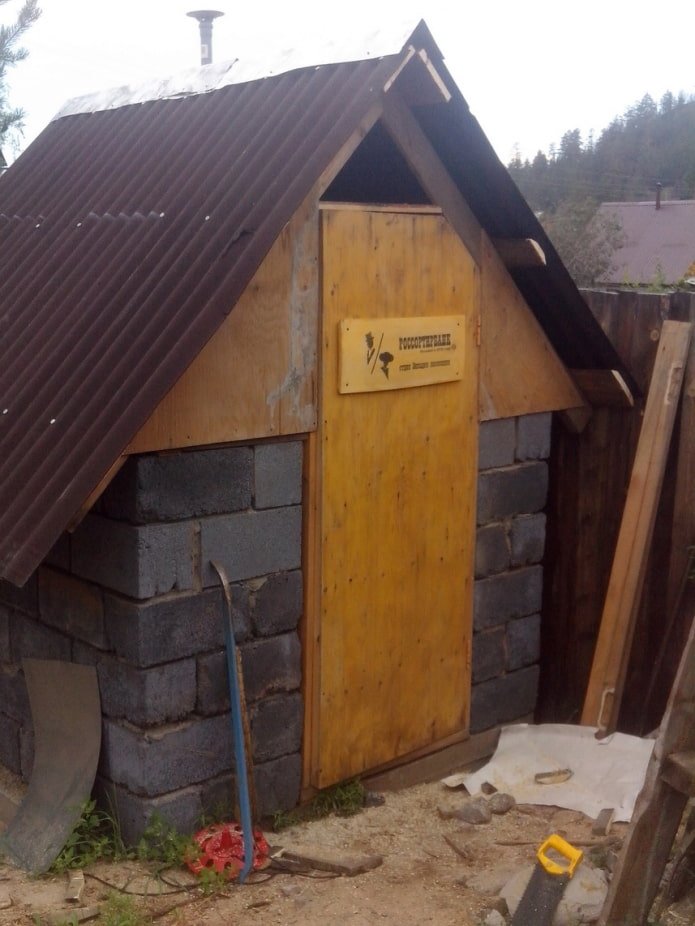
Video for beginners
If the option with formwork and cement seems complicated, there is a less labor-intensive option: dig in an old barrel, and put a country “house” made of wood on it:
How can you decorate the outside?
Using small carved wood parts during construction will save you from problems with further decor: such a house is good in itself.

The photo shows an example of carved decor
If the useful structure is the most ordinary, drawings will help to turn it into an original landscape effect: both inside and outside.
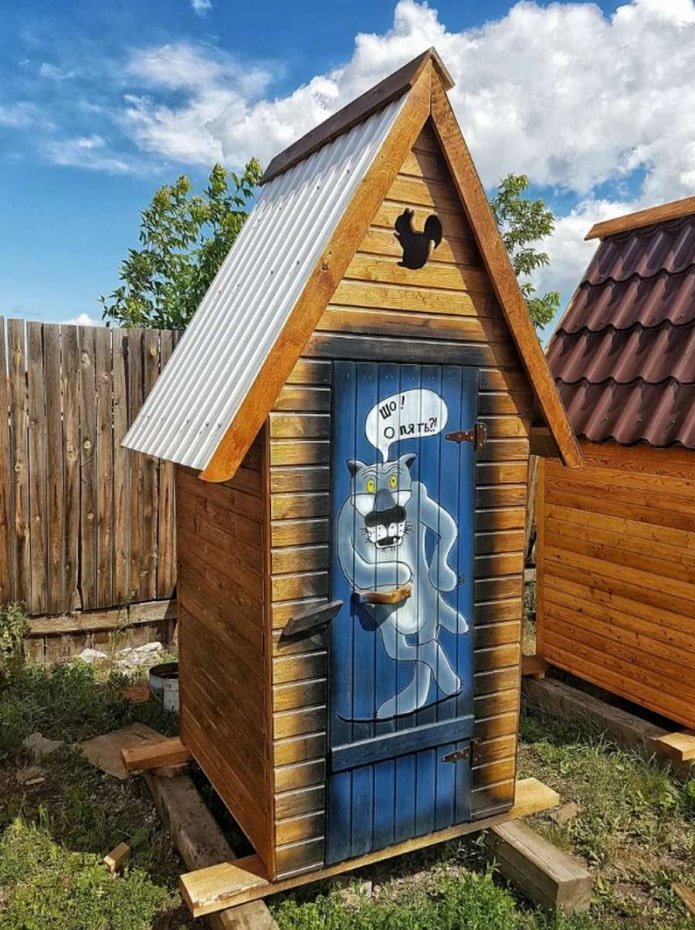
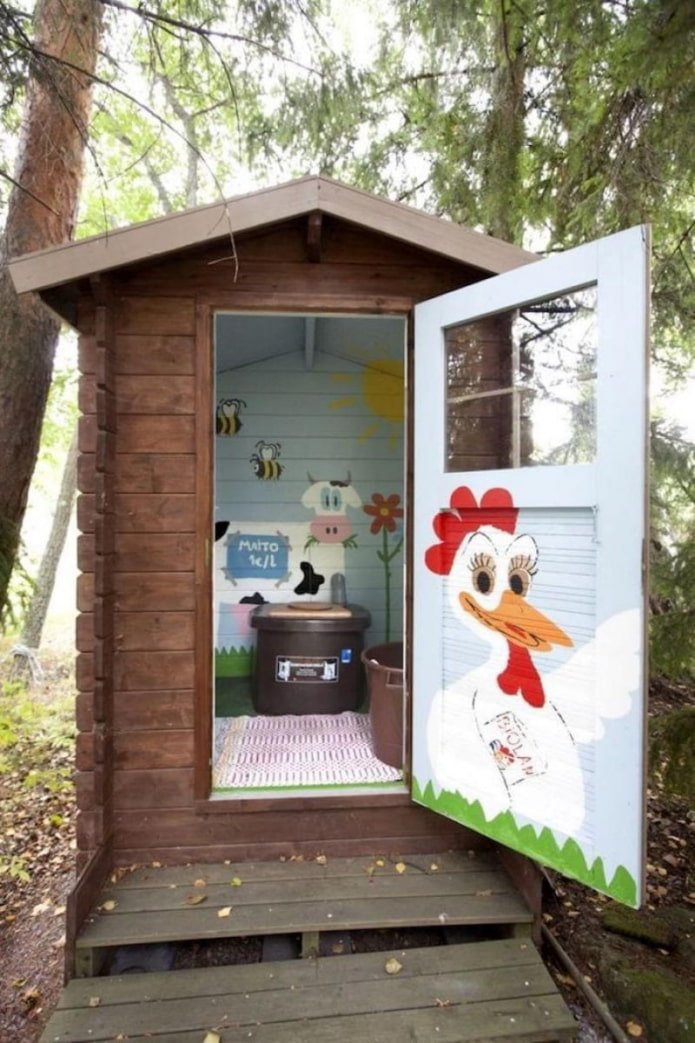
What is abundant in a dacha is greenery – why not let creeping hops or maiden grapes grow right along the walls of the closet? The only downside is that the beauty will last until next autumn, but in the spring it will start to grow again.
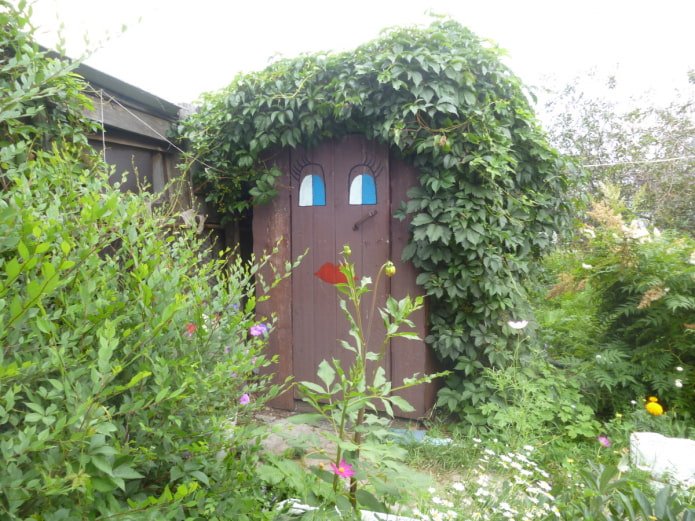
The photo shows a toilet overgrown with hops
In order not to spend money on decoration later, you can initially order a toilet stall in an unusual shape. The most popular models are a mill, a lighthouse, or a gnome or hobbit house.
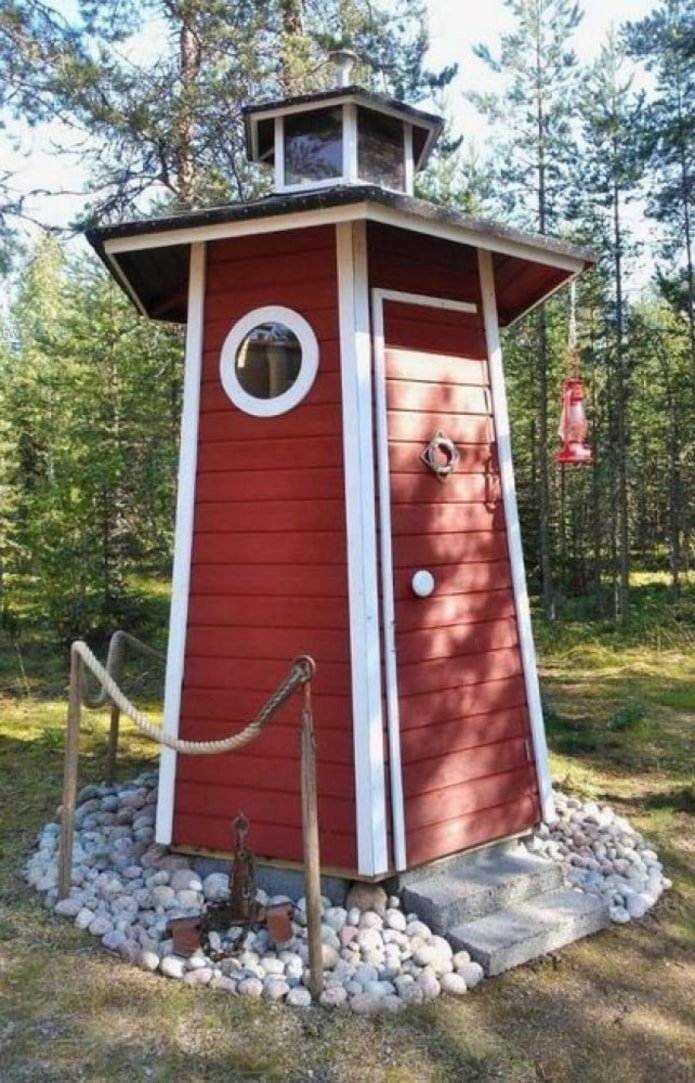

Beautiful ideas for inspiration
To prevent a toilet on your property from becoming a no-go area, you should take care not only of its practicality and cleanliness, but also of its appearance. For example, you can create a whole composition of plants and other decor around the toilet.
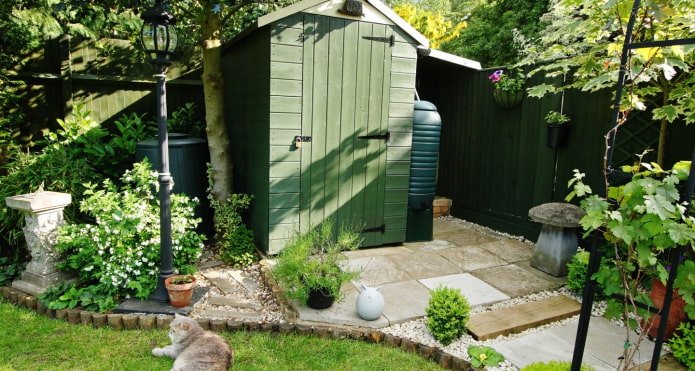
The photo shows the improvement of the area near the toilet
Or choose not a rustic, but a modern style: straight shapes, a monochrome palette in the exterior and interior decoration.
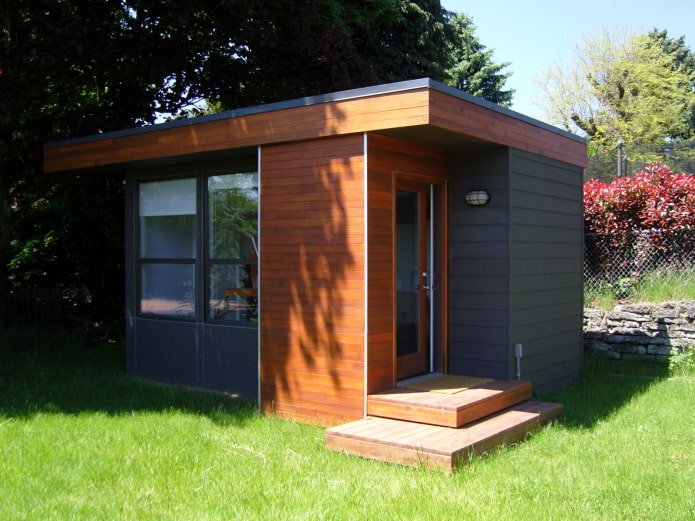
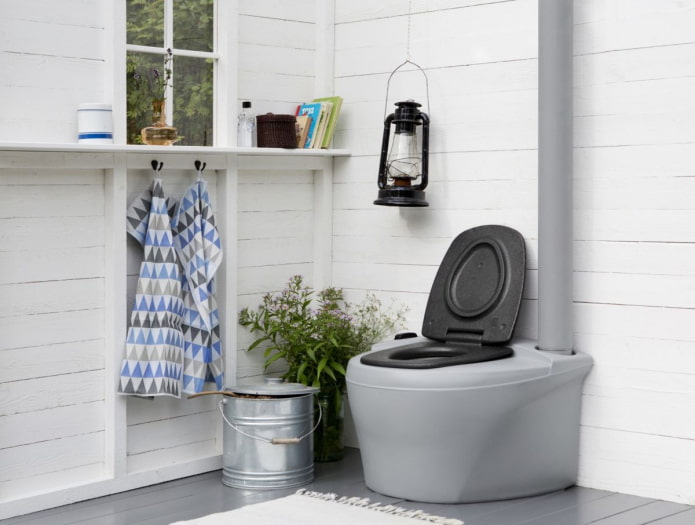
And finally – that very gnome’s country house. Check out how impressive it looks surrounded by a composition of plants, garden paths.
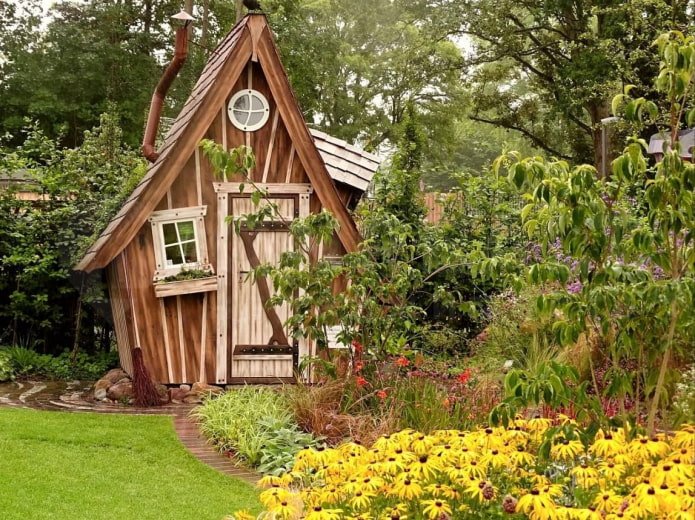
The photo shows the original shape of the house
Give your country toilet a little time and attention so that it is a pleasure to use, and you don’t even think about problems!
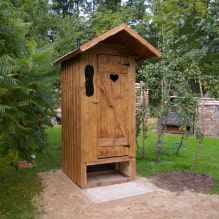
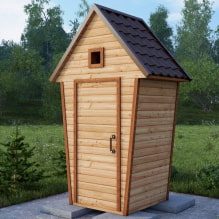
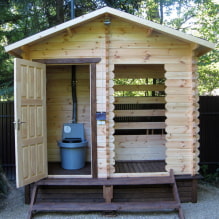
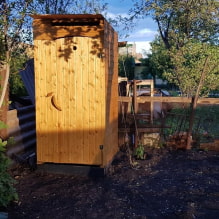
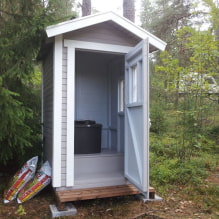

Now reading:
- Remaking N. Khrushchev’s Refrigerator: 5 Ideas and Step-by-Step Guide
- Painting walls in the interior: more than 80 stylish photos and modern solutions.
- Installing mosquito nets on plastic windows: 5 simple methods.
- ways to unusually decorate shelves and racks from IKEA.
- Hyundai Genesis: Luxury Redefined in Style